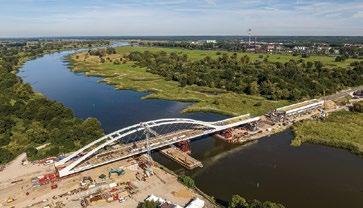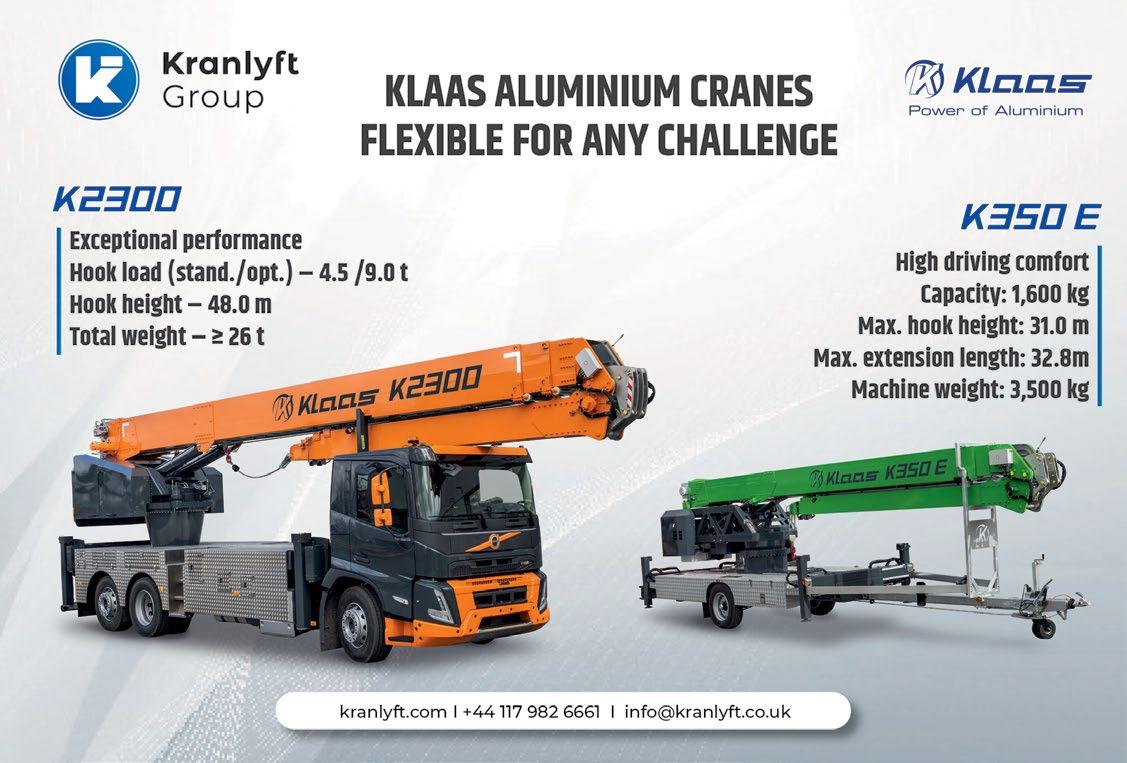
4 minute read
Innovative solution for symbolic railway bridge
Innovative solution for symbolic railway bridge
When it came to installing a new Oder railway bridge between Germany and Poland, Dutch international crane and heavy lift company Mammoet encountered some unusual challenges, forcing it to find an innovative solution which also reduced construction time and minimised disruption to the rail network.
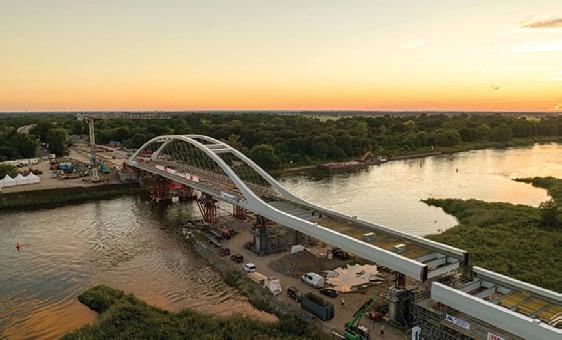
The new rail crossing is part of the panEuropean rail network and a central element of the Berlin-Kostrzyn-Gorzów railway modernisation programme. The crossing revives the once famous Berlin-KönigsbergEydtkuhnen rail line, breathing new life to an important pre-Cold War trade corridor. The 266 metre long crossing replaces a derelict, pre-War single track bridge with a distinctive 130 metre network arch spanning the river Oder - Poland’s second longest river. The steel structure, with its crown positioned above the demarcation line of the border, is a landmark that highlights the importance of the location between the two countries.

Most river bridge replacements are floated into place using a combination of Self Propelled Modular Transporters (SPMTs), launching plates and a pontoon. However, the shallow and changing water levels of the river made the pontoon method impractical, if not impossible. The size of the bridge was also a factor being 180 metres long and weighing 2,100 tonnes, ruling out a big crane solution. After due consideration Mammoet managed to avoid cranes and pontoons with a solution that was more flexible, safer and more efficient.
Construction technique
The new bridge is a network arch bridge with carbon hangers and will help to increase line capacity and shorten travel times by allowing a maximum permissible train speed of 120kph.
The bridge was assembled on the German side of the Oder and moved as a whole structure across the river to its final installation position. First the bridge was jacked up to two metres, allowing the SPMTs to be positioned underneath, it was then transported to the riverbank and positioned over the first of five temporary supports. The bridge was then launched using a combination of custom designed launching plates and strand jacks that pulled the structure horizontally until it reached the next temporary support. This process continued until the bridge reached the opposite side of the river.
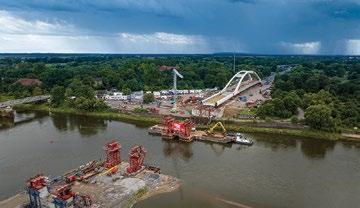
The SPMTs supporting the rear of the bridge were then removed and skid shoes were installed to slide the bridge into its final position. At this point, the bridge was taken over by climbing jacks, which allowed the temporary supports to be removed and the bridge to be lowered down onto its final resting pillars.
The whole process required around 45 truckloads of specialist heavy equipment including 96 axle lines of SPMTs, 26 launching plates, 10 climbing jacks and two strand jacks.
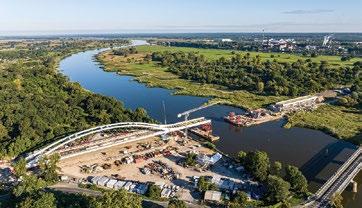
Plate Spinning
One of the key considerations with any bridge launch is the risk of structure deformation during the launch process. To solve this, temporary supports with hydraulic cylinders were used at the quay edges and in the water, as well as modified launching plates. The plates were equipped with spherical bearings allowing them to be moved in any direction. During the launch the weight on each tower and cylinder was controlled to ensure a smooth and safe operation. Jack van der Vloet, Mammoet’s lead engineer said: “It is a big bridge and wind loads had to be considered. It has a large deflection, so the launching plates had to be modified. Typically, they swivel in two directions, however, in this case they had to swivel 360 degrees. This always gave us full control of the operation. This method of bridge installation using modified launching plates can be adapted for other bridge projects, where using a crane or pontoon is not possible or is inefficient.” ■
